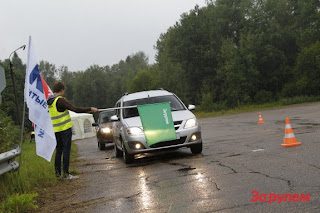
Operation of Largus in rainy weather

Since the acquisition of Lada Largus for myself, I have already had to drive on different roads, on perfectly flat asphalt, on paving stones and even on broken Russian dirt roads into the trash. Recently, torrential rains were pouring in our region for a whole week and often we had to go out of town and travel several hundred kilometers along intercity highways.
I would like to share my impressions of how Lada Largus behaves in rainy weather and how it copes with such weather conditions. The first thing I paid attention to and what I can say did not really please me was the fogging of the windshield, if the heater fan is not turned on. But it is worth turning on the stove at least for the first speed mode, the glasses immediately sweat and the problem is eliminated.
There are also complaints about the wipers. Firstly, immediately after the first rain, an unpleasant creak of wipers appeared, tried to change the operating modes, increase the speed - but nothing helped, I had to replace my native factory brushes with new Champion, there is no more creak and the quality of glass cleaning is at a height, compared to basic brushes.
The operating modes are quite satisfactory, there are three of them, as on the same Kalina. But the rear wiper is annoying, and more specifically, the water reaches the glass for a very long time, sometimes you even have to keep the lever pressed for almost half a minute for the water to enter the sprinkler.
The front wheel arch liners are not very competent in their work, while driving on a wet road, all the dirt remains at the junction of the front fender and the bumper, and strong mud streaks are constantly formed in that place. Here, it will most likely be necessary to interfere with the factory design and change them to new ones or modify them yourself. Otherwise, after each puddle, I don't really want to wash the car.
But here the factory standard tires behave very well, although I did not drive at high speeds on a wet road, more than 100 km / h, but at a lower speed, the tires hold the car quite confidently, and even if it gets into a puddle at a speed of about 80 km / h the car is not thrown to the side and aquaplaning is practically not felt. But still there are suspicions that at a higher speed, such a good result will not be. But this will change over time, especially since winter is coming soon and the tires will have to be changed to winter ones, and until next summer I will think of something.

